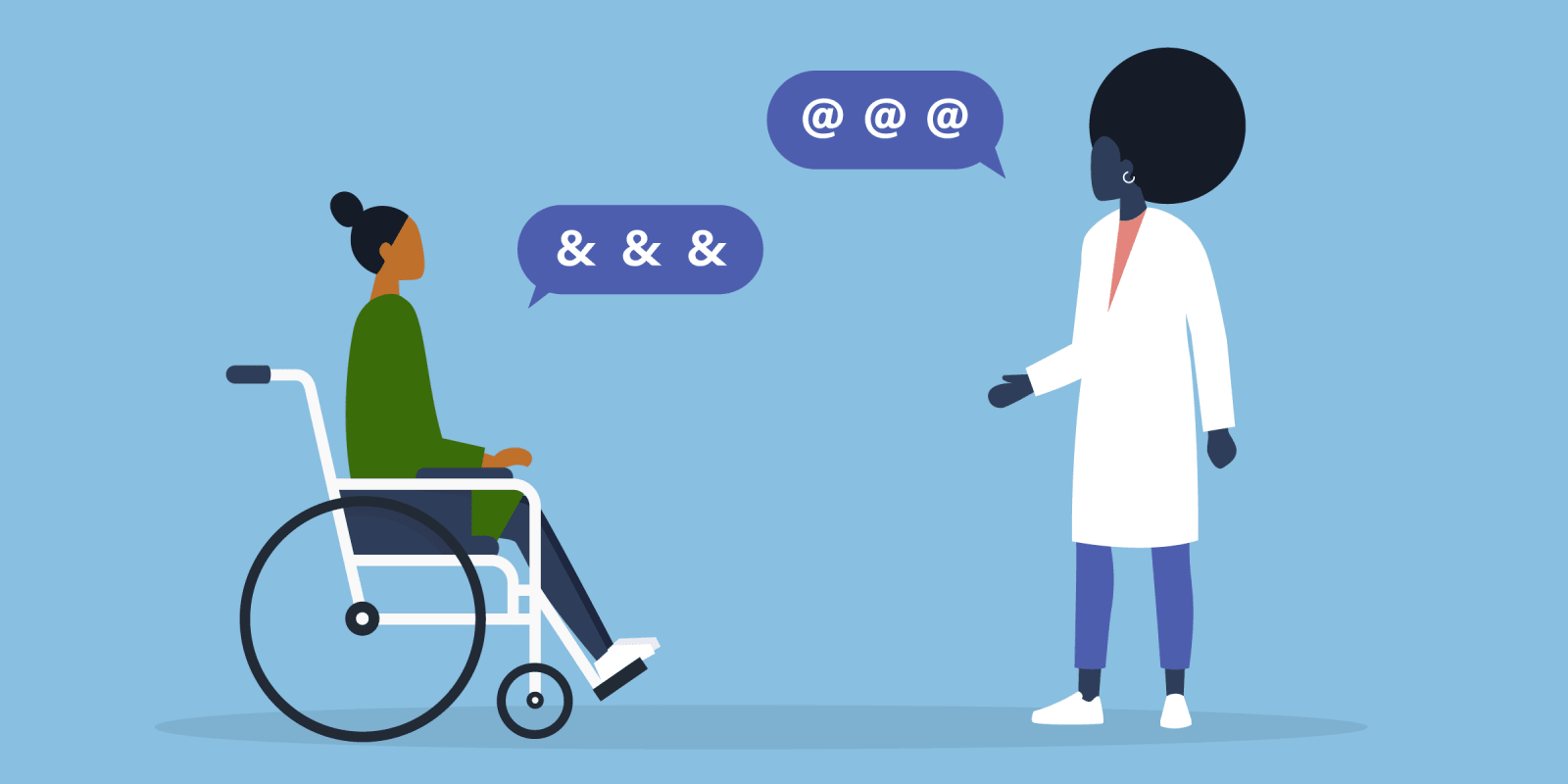It was nearing 5 p.m. and we still had three more consults to see. As soon as the interpreter confirmed that the patient and his wife had no more questions, we moved to head out of the door. Of course, that was when the patient asked in Spanish what platelets were. I was the only one on the medical team that understood Spanish. The attending and fellow turned to me with the expectation that I could interpret for them. I felt a sinking feeling in my gut. Explaining the intricacies of platelets, growth factors, and hematologic disorders was beyond my basic Spanish abilities, but I could see that we did not have time to get another interpreter and as the medical student, I didn’t feel that I could say otherwise. So, I did what I shouldn’t have: I stumbled my way through the explanation.
This was just one of the many examples of where I have seen myself and other members of the medical team fail to use interpreters correctly. I have seen clinicians who speak in fast paragraphs making interpretation a difficult — if not impossible — process, witnessed a resident wait for a formal interpreter for 20 minutes but then utilize the family member in the room instead, and been in numerous rooms where an interpreter was not used at all, due to time constraints. At this point, the importance of using interpreters is well known. Patients with limited English proficiency (LEP) have decreased satisfaction with care, poor understanding of their medical care, increased risk of misdiagnosis and medical errors, and worse clinical outcomes. For the nearly 25 million individuals with LEP across the U.S., proper use of medical interpreters is vital to providing equal access to quality care. Medical interpreters have been shown to improve care for LEP patients by specifically decreasing communication errors, increasing patient comprehension, improving clinical outcomes, and increasing patient satisfaction with clinical services. Yet despite these benefits, a 2016 study found that only 68.8% of hospitals in the U.S. offered language services based on a 2013 database and the American Census Bureau’s American Community Survey from 2009-2013. While one might assume this number is reasonable given the varying distribution of non-English speaking communities across the U.S., the study found that even in areas in which greater than 10% of the population had LEP, only 75% of the hospitals in that region offered language services.
Efforts to combat these inequalities were attempted on the federal level under section 1557 of the Affordable Care Act; however, in 2020 the HHS rolled back many of these regulations. Federally funded entities are no longer mandated to provide documentation of interpreter use or offer video services, and these entities can still get federal compensation despite not having a language access program. Increasing compliance with interpreter services has been a challenge on many fronts. Aside from state-level legislation and increased reimbursements for this service, we need to find other ways to “incentivize” the use of interpreters. Like any other aspect of medicine, how to use interpreters and the importance of these services can be taught. Utilizing education at all levels of medical training and incorporating unique innovations may help to bridge some of the gaps.
A 2018 study on U.S. medical school curricula attempted to investigate how many medical schools offer formal instruction of how to work with medical interpreters or patients with LEP. Unfortunately, of the 147 schools that were sent surveys, only 38 responded; however, of those 38 schools, 76% offered a specific curriculum for this topic — which is encouraging but not necessarily reliable given the small sample size. It has been suggested that medical schools should incorporate clerkship electives that focus on community-specific language barriers. Specifically, standardized patient sessions using interpreters and LEP patients would allow students to get hands-on experience with interpreters in a non-clinical setting. While USMLE Step 2 Clinical Skills is no longer being offered, schools should consider including an interpreter case during their Objective Structured Clinical Examinations. Formal evaluation and feedback of medical students can help to mitigate many of the user errors involved with interpreter services. While these habits can be built during medical school, they need to be sustained during residency and eventual practice. Incorporating interpreter training and LEP patient centered didactics in GME requirements and offering CME credits to clinicians for these programs may help to emphasize the importance of interpreter use.
While educational interventions are one avenue for change, system-wide interventions are likely necessary to really change the culture of medicine regarding interpreter use. A 2009 study found that despite knowledge that LEP patients are not receiving equal care when professional interpreters are underutilized, resident physicians often made decisions regarding interpreter use by weighing the benefits of accurate communication against their time constraints. In a system in which physicians are burdened by massive caseloads and lack of time, they may often feel that they can “get by” without harming the patient. Transforming the culture of medicine requires role models among supervising physicians that emphasize the importance of interpreter use and make such practices part of the norm. Our medical system needs to find a way to support health care workers by providing timely available interpreters, easy access to phone and video interpreting services, fair compensation for these practices, and unique solutions that utilize new technology.
Like the residents in the 2009 study who weighed time constraints over the benefits of interpreter use, I also used a similar cost-benefit decision-making process when I was expected to speak for my team using my limited Spanish skills. In that moment, I used a flawed decision-making system. I assumed that the harms of any mistakes in my explanations were minor compared to the time it would take to produce another Spanish interpreter or the possible risk of being seen as uncooperative by my team. Thankfully, I have been able to make better decisions since that experience. Most recently, I was able to prioritize the importance of using an interpreter despite the pressure of having very limited time during my EM rotation. Seeing a doctor and being sick is already a daunting experience and an added language barrier only makes that situation scarier. By teaching the value of interpreter services, hopefully clinicians can see that speaking our patient’s language is a crucial part of their care that provides an unmeasurable value.
When do you think students and clinicians should learn to work with medical translators? Share your ideas in the comments.
Ruchi Desai is a current fourth-year medical student at UC Irvine School of Medicine. She is planning to pursue a residency in internal medicine. During her free time she loves to read, listen to podcasts, and learn as much as she can about the world. She is a 2021–2022 Doximity Op-Med Fellow.
Image by nadia_bormotova / Getty







